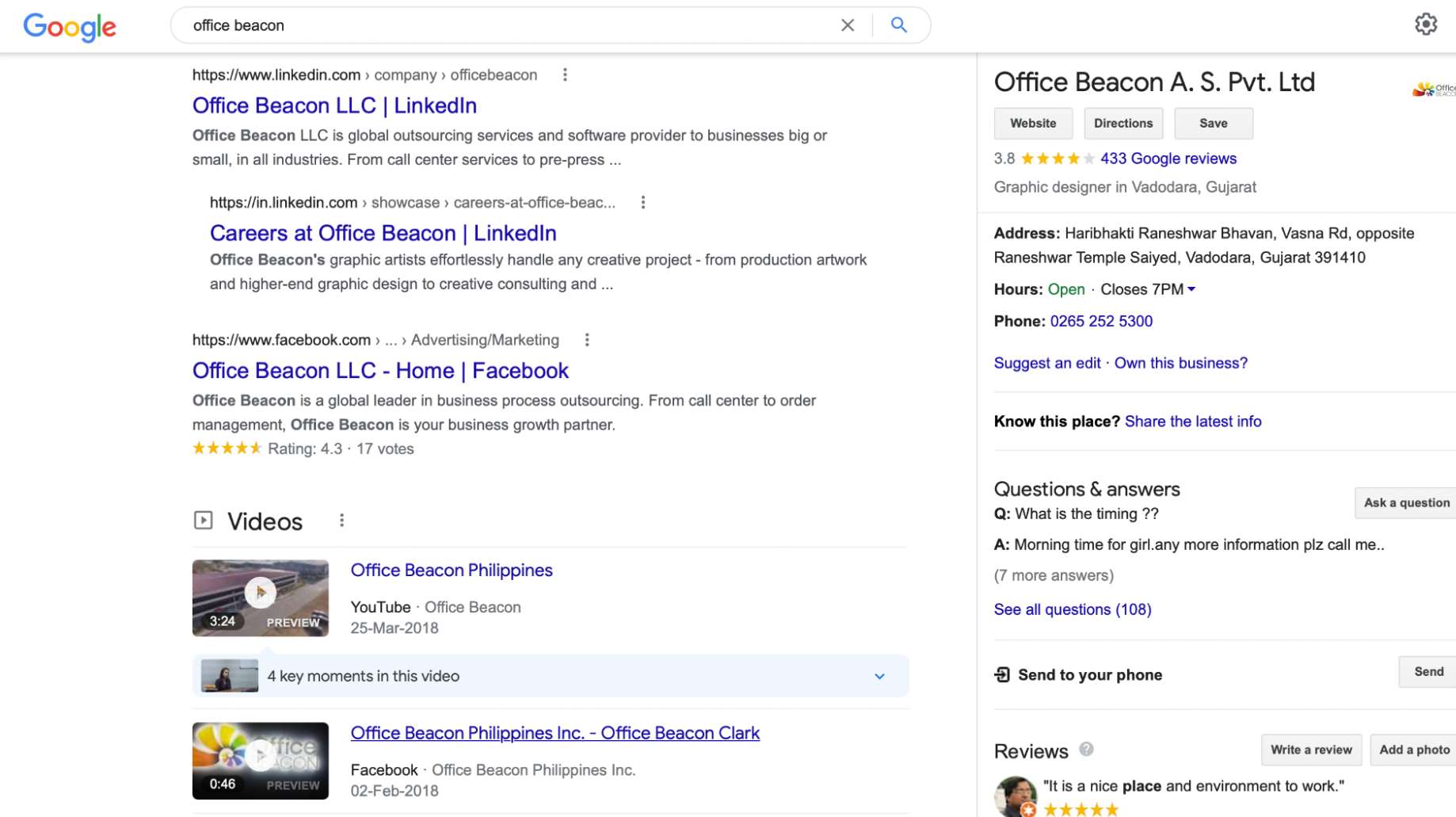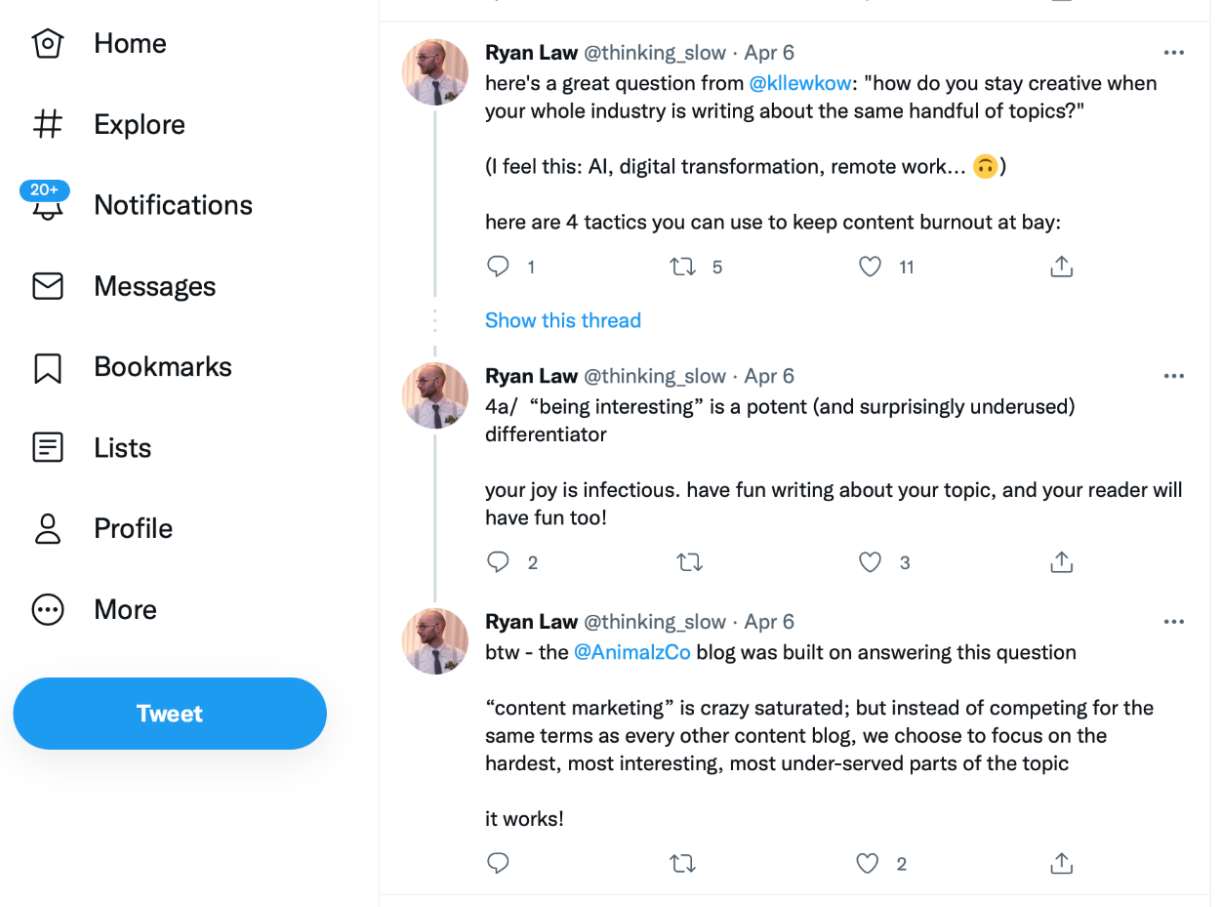Google launched Google Adwords in October 2000 but renamed it Google Ads in 2018. In keeping with its approach to organic search results, Google considers who links to a given web page and when to show an ad based on how relevant it is to the user’s query.
The world’s favorite search engine sets the ads apart from the actual search results and places them either on the top or bottom of its result pages.
This article breaks down how to advertise on Google so you understand how Google Ads work and the different types of ad campaigns you can leverage to advertise with Google.
Plus, you’ll learn the steps to create Google Ads, best practices and bidding strategies to help you get the most out of your advertising budget.
But before that …
Terms to understand how Google Ads work
Before running an ad campaign, make sure you understand the following common Google Ads and PPC terms. These will help you correctly set up, manage and optimize your ads and get the best results from your paid marketing efforts:
1. PPC
Pay-per-click (PPC) is an advertising method where you pay each time a user clicks on your online ads. It’s the most common type of paid campaign and is not specific to Google Ads. You must know the pros and cons of PPC before advertising with Google.
2. Bidding
Google Ads works on a bidding system where businesses enter the arena as advertisers. You select the highest bid amount you are willing to pay for a click on your ad and Google measures that against other bids to allot ad placement on its pages or the Google Display Network.
The three options available for bidding are:
- CPC (cost-per-click): It’s what you pay for each click on your ad
- CPM (cost per thousand): It’s the amount when your ad shows to a thousand people
- CPE (cost per engagement): It’s the dollars you pay when users take a predetermined action on your ad
Let’s take an example to understand this better. If your maximum bid is $5 and Google sets the CPC to $3, then you get the ad placement. But if Google determines the CPC is more than $5, you lose the ad placement to another bidder.
3. AdRank
AdRank determines the ad placement. If it has a higher value, your ad will rank better and generate more clicks from users. Google calculates AdRank by multiplying your maximum bid by your Quality Score (QS).
4. Quality Score (QS)
QS judges the quality of your ad by CTR, the relevance of keywords, the user experience offered by the landing page, and its performance on the search result page (SERP). According to Google, “higher quality ads can lead to lower prices and better ad positions.”
Measured on a scale of 1-10, a QS of 10 denotes the best score and means a lower ad spend.
5. Click-Through Rate (CTR)
CTR denotes the number of clicks your ad gets out of the total views. A higher CTR means your ad targets the relevant keyword(s) and meets the search intent.
6. Conversion Rate (CVR)
CVR refers to the number of form submissions in proportion to the total visits to a landing page. When you have a high CVR, it means that your landing page offers a superb user experience in line with your ad’s promise.
7. Google Display Network (GDN)
It is a network of websites that let out spaces on their web pages for Google Ads in exchange for a “commission.” These can be text-based or image ads and show up alongside relevant content to your target keywords.
Google Shopping and app campaigns are the two go-to Display Ad options.
8. Extensions
Ad extensions let you furnish your ad with additional details at no extra charge. The five categories under which ad extensions lie are Sitelink, Call, Location, Offer and App.
How is Google Ads different from AdSense
Google Ads is an online advertising platform that allows businesses to bid for ad placements and drive traffic to their websites. The ad placements can either be on the search engine result pages or on any sites and apps that make the Google Display Network and show the display ads.
Let us take two examples to understand this better.
The image below shows the topmost section of the search result page for the term “project management tools.” Here, the ads from Monday and Jira come up for this query because they are targeting it as their keyword in the paid advertisement.
The ads on search essentially follow the same rules as organic results. You target a keyword and use it in your campaign to capture the best position in the SERP.

Image Source: Google
But it’s a little different with Google Display Network ads (also simply known as display or banner ads). Unlike text results marked as “Ad” on search, display ads appear on the articles, videos or websites that your target audience browses.
You rent space on another web page and use stand out graphics to drive clicks to your site.
Take this banner ad by Adobe on Collins Dictionary’s site, for example.
It illustrates how Google Display Network ads work. A great blend of copy and design, the Adobe ad shows on the Collins site because the latter is a part of the Display Network.
The ad pushes the site visitors on Collins to check out the introductory offer on Adobe’s Creative Cloud.

Image Source: Collins
After paid search and banner ads, let’s now talk about Google AdSense.
Google AdSense came three years after Google Ads. It lets publishers carry advertisements on their websites and other digital platforms in return for a commission.
These publishers make the Google Display Network and help advertisers get their campaigns in front of a large audience. In the above example, Collins is a publisher and leverages Google Adsense to earn a commission by carrying Adobe’s ad.
To sum up the deal about Google Ads and Adsense:
They have different uses and serve different audiences. The Google Ads program attracts advertisers to run campaigns and drive traffic to their websites.
Meanwhile, Google Adsense attracts publishers to “rent out” space on their virtual real estate and monetize existing traffic.

Types of Google Ads
Google Ads begins with a goal and campaign. With five campaign types to choose from, you must select one that aligns with your brand strategy, marketing goals and budget.
To understand the right campaign type for your advertising needs, consider the above factors alongside the following features and uses of each:
1. Search campaigns: text ads on search results
These are ads on search result pages reaching customers when they hunt for your product or service on Google. Since these text ads reach people actively looking for your product or services, they are great for driving traffic and leads to your website.
Other benefits of search campaigns include:
- Easy to set up, especially with smart campaigns
- Boosts online sales and signups
- Offers highly specific targeting
The following image shows the search ad by Google for the phrase “advertise with Google.”

Image Source: Google
2. Display campaigns: image ads on websites
Through visually appealing graphics, display ads let you reach your target audience beyond Google search and on millions of apps, websites and Google-owned properties.
It helps increase your reach and stay top of mind with the option to create a Display campaign that uses data segments to show ads to people who have visited your website or engaged with your app.
Other benefits of display campaigns are:
- Drive signups and leads
- Boost brand awareness and product/service consideration
- Follow up with people who’ve already viewed your ads or site
3. Video campaigns: video ads on YouTube
Video campaigns show video ads on YouTube and other websites. While some campaigns help increase general brand awareness, others drive conversions or customers to shop on your website.
Google offers three different video ad formats for YouTube. But within those options, you can also pick an overlay image or text ad to appear on the lower 20% of a video.

Image Source: YouTube
4. Shopping campaigns: product listings on Google
Shopping campaigns are helpful for retailers looking to sell their product inventory. These ads appear on the Google shopping tab and search results pages.

Image Source: Google
Through shopping campaigns, Google also lets store owners use local inventory ads for advertising products available at their brick-and-mortar locations.
You can use shopping campaigns to:
- Turbocharge your retail marketing efforts through captivating product listings
- Drive sales and leads
- Boost a nearby storefront
5. App campaigns: promote apps on many channels
App campaign uses information from your app to automatically optimize your ads across YouTube, Discover, Play, Search and over 3 million apps and sites. It helps you find new app users and increase sales within your app.
You should use app campaigns to:
- Drive installs, engagements and signups for your app on mobile devices
- Engage in multichannel marketing
- Automate targeting, ad creation and bidding for best performance

Image Source: Google
How to create Google Ads
There are a couple of easy ways you can start with Google Ads. You can visit the Google account associated with your brand and follow these steps to start running paid campaigns on Google:
1. Define a goal
Go to the Google Ads homepage and click on the “Get started” button on the top right hand corner or in the lower left of the page. If directed to your dashboard, select + New Campaign.
Next, choose a goal for Google to understand your target audience and how they will get the bid money.

Image Source: Google
2. Select business name
After goals, Google will ask for your business name. Fill in the field and add the website URL where you want the users to reach after clicking your Google Ads.
If you have Google Analytics set up on your website, connect it with your ad campaign to track its performance or skip this step for later.
3. Create an ad
This section allows you to craft a compelling headline and description for your ad. To get your creative juices flowing, Google also offers helpful tips and sample ad descriptions.
The secret to writing a high-performing ad is knowing the target audience and its pain points. Dig into your customer persona research to find that info while crafting the ad copy.
4. Choose keywords and location
On the next page, choose the keyword themes that match your ad to searches and select the location where you want to run your ad. This location can be a specific region where a physical storefront delivers its services or a broader geographical category like a city or country.

Image Source: Google
5. Add billing details
The last step in the process is to set the budget. Google lets you pick from pre-made plans or create a custom budget. Once done, review your campaign and enter the payment information.
Verify the details and click on “Submit” to create your first Google Ad.

Image Source: Google
Google Ads best practices
Like all Google products, Google Ads is easy to set up and does not take much time. But if you don’t follow Google Ads best practices, there’s a high chance that your ad campaigns will underperform and not turn in ideal results.
1. Use a PPC planning template
A planner helps to organize your PPC campaigns. With Google’s PPC planning template, you can see how your ads will look online, the character counts, and manage your ad campaigns from one place.

2. Don’t target broad keywords
If your keywords are a long shot, Google will place your ad in front of the wrong audience. That’s why testing keywords should be a key component of your strategy.
To avoid fewer clicks and a higher ad spend, review keywords generating clicks and use them to match your ads with the right audience.
3. Stay away from irrelevant ads
Your ads must match the searcher’s intent to generate enough clicks. Otherwise, you may end up squandering away your PPC budget.
Ensure your headline and ad copy match the keywords you are bidding on and the target audience can see the value of your product or service for their pain point.
4. Improve QS
Google uses QS to determine the rank of your ad. The higher it ranks, the better its placements. If your QS is low, the ad will get less traction and convert fewer visitors. Review the QS components and work on the CTR to improve your QS. Another way is to optimize the landing page.
5. Optimize the ad landing page
An excellent ad is only one aspect of online advertising. The real challenge is to keep the visitors on your site after they click through the link.
If the ad landing page experience on your website is “Below average” or “Average,” try these methods:
- Offer people what they want. If someone clicked on your ad for “running shoes,” the landing page they visit should have a shoe inventory.
- Maintain consistent messaging from ad to landing page. Ensure the page follows through on the ad’s call to action or offer. If that’s not possible, find the most relevant and useful page from the existing ones.
- Ensure your website is mobile-friendly. Check for ease of navigation and use the Mobile-Friendly Test to see how your landing page performs on mobile devices.
- Try conversion rate to judge the quality of your landing page. It does not impact its status but can be a helpful way to measure and optimize the user experience. Here’s a tip from Google on what a great user experience can look like.

Image Source: Google
- Work on loading speed. The time a landing page takes to load can determine if someone bounces or buys from you.
Google Ads account structure
It is crucial to understand the three-layer design of Google Ads and how Google structures your account before you create multiple ads. It will enable you to organize your ads, keywords and ad groups into powerful campaigns that reach the right target audience and meet business goals.
The three layers of Google Ads are:
- Account: Your account is linked to a unique email address, password and billing information
- Campaigns: Your campaigns have their own settings and budget that determine where your ads appear
- Ad groups: Your ad groups contain a similar set of keywords and ads

Image Source: Google
As the above image shows, “account” sits at the topmost level of the Google Ads hierarchy. Within each account are campaigns that contain their ad groups.
In turn, each ad group has its unique ads and keywords. While each campaign takes a theme like the Memorial Day sale, you can structure ad groups by your products or services.
The structure of your Google Ads account may not reflect the above hierarchy but ordering the account will have a significant impact on PPC metrics like QS.
Bidding strategies for Google Ads
Bidding comes after you set up your ad campaign and tracking. Since the ability to rank in Google Ads depends on how well you bid, it’s crucial to be aware of the best practices for Google Ads bidding strategies.
While your budget and goals determine the bid amount, a few pointers to keep in mind as you get ready to launch your ad campaign are:
1. Automated vs. manual bidding
Automated and manual are two options for bidding on your keywords. In automated bidding, Google adjusts your bid based on the competition. You can set a maximum budget and Google gives you the best shot at winning the bid within a specific range.
On the other hand, manual bidding lets you set the bid amounts for ad groups and keywords, putting you in control of your budget and limiting ad spend on ineffective campaigns.
2. Cost per acquisition
Like manual bidding, cost per acquisition puts you in charge of your ad spend. At first, it may seem counterintuitive because of its high price.
But if you don’t want to spend huge money on converting prospects into leads, then cost per acquisition is an excellent option since you pay dollars only after acquiring a customer.
3. Bidding on branded search terms
Branded search terms include your company or unique product name, like “Office Beacon virtual assistant.” The argument in favor of bidding on branded search terms is that it lets you claim real estate that may otherwise go to competitors.
However, the critics consider it a waste of money since bidding on branded search terms will likely turn up organic search results.

How to use Google Analytics to track Google Ads
Whether social or search, big brands have a ton of customer research and money to invest in paid marketing and win handsome returns. But small businesses need to be extra careful with their advertising efforts to ensure they are not wasting their resources and targeting the right audience and keywords.
That’s where Google Analytics comes in.
Google Analytics lets you track and analyze your Google Ad campaign. It offers insights into what’s working and not to help you make necessary adjustments to your future campaign to make sure they have a better chance at pulling in the desired numbers.
After setting up Google Analytics, follow these steps to link it with Google Ads:
- Visit your Google Ads account and click the “Tools” menu.
- Under Setup, click “Linked accounts” and select “Details” under Google Analytics.
- The above step will take you to the list of Google Analytics websites you can access. From the available options, choose “Set up link” on the website you want to connect with Google Ads.
- You will now be able to link the Google Analytics view of your website.
- Finish the process by clicking “Save.”
The next section looks at how you can use Google My Business to advertise on Google for free.
How to advertise with Google for free

Image Source: Google
According to Google’s Economic Report, more than 17 million American businesses received calls, requests for directions, bookings, reviews and other direct connections to their customers from Google in 2020.
To take a state-wise share, Google helped generate $93.24 billion of economic activity in California and nearly 2.09 million California businesses benefited from Google advertising products.
Google Ads is a quick way to get the word out about your product or service. But you can achieve the same goal through Google My Business without spending a ton of money.
Unlike Google Ads, Google My Business allows local businesses to advertise their business on Google for free and acquire new customers.
Follow these steps to start with your Google Business Profile:

Image Source: Google
- Visit Google Business Profile Manager and enter your business name and category.
- Add your location if you run a brick-and-mortar and want customers to visit on-site. This puts you on Google Maps and helps users find you easily.
Not adding this detail will still show service-area businesses for relevant searches. Select the relevant service areas pertaining to your businesses when setting up your profile.
- Input the contact details for your business, including the phone number and the website URL
- Last, finish the process by clicking ‘Next’ to verify your Google My Business profile.
Remember that the steps outlined above help you begin with advertising on Google for free. To see results and drive revenue, you must follow Google My Business best practices and optimize your Business Page + website.
Let’s take two FAQs.
Frequently asked questions
1. How much does it cost to advertise with Google?
It depends on the advertising channel. With search, you pay money every time a user clicks on your ad in the results pages. This CPC varies depending on the bidding amount, the AdRank and the QS. But with banner ads on Display, you can go for CPC, CPM or cost-per-action (CPA).
While CPC works to generate traffic, CPM and CPA help increase awareness and conversions. Assess your current business goals and choose a suitable advertising option when running banner ads on Google Display Network.
You do not pay a fee for participating in Google AdSense but the revenue you earn through this channel depends on your audience, the ad quality and the ad placement.
The higher the clicks and impressions the ads elicit from your site visitors, the better the commission from AdSense.
2. Are Facebook Ads better for businesses than Google Ads?
Both advertising platforms are for different stages in the buyer’s journey. Google Ads is better for reaching people with high purchase intent, whereas Facebook Ads help run paid social campaigns and reach customers near the top of the funnel.
Depending on your paid marketing strategy, you can focus on either channel or use them together to hit business goals.
Wrapping up
Google Ads has amazing benefits for business goals like driving brand awareness and website traffic but with so many tasks on their plates, most entrepreneurs find themselves unable to take on one more project.
An easy solution is to hire a marketing remote assistant. Contact us today to pair you with a top-notch expert to help you get started with Google Ads right away!















































































































